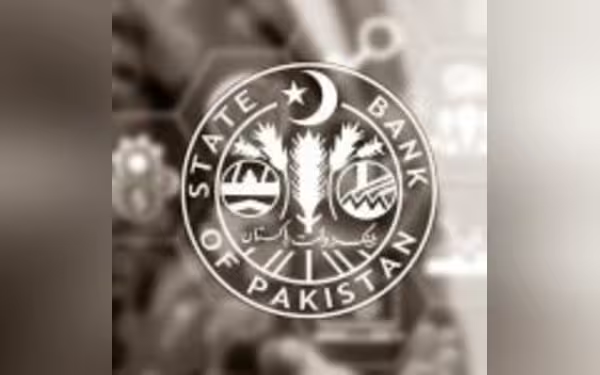Saturday, October 5, 2024 07:27 PM
State Bank of Pakistan's Financial Stability Review Highlights Sector Resilience
- Banking sector shows 27% asset base expansion amidst economic challenges
- Islamic banking sector sustains growth trajectory with robust earnings
- Financial Market Infrastructures exhibit operational resilience with e-banking transactions growth
 Image Credits: pakobserver
Image Credits: pakobserverThe Financial Stability Review by the State Bank of Pakistan for CY2023 highlights the resilience and growth of the country's financial sector amidst economic challenges, showcasing the banking sector's expansion, Islamic banking sector's robust earnings, and the operational resilience of Financial Market Infrastructures.
The recently released Financial Stability Review (FSR) for CY2023 by the State Bank of Pakistan (SBP) sheds light on the strong performance of the country's financial sector amidst economic challenges. The report delves into the performance and risks across various financial segments, including banks and non-bank financial institutions.
Despite initial hurdles like rising inflation and weak foreign exchange inflows, the latter half of the year witnessed a positive turnaround, attributed to strategic policy interventions and a nine-month Stand-by Agreement (SBA) with the IMF. This shift led to a decline in inflation, economic revival, and a stabilized exchange rate, fostering robust growth in the financial domain.
The banking sector emerged as a key player in this growth story, with a notable 27% expansion in its asset base. Despite market volatility, banks exhibited resilience, registering a 29.5% growth during the review period. The surge in assets was primarily fueled by investments in government securities, while private sector lending faced challenges due to prevailing macroeconomic conditions.
Banking institutions primarily financed their balance sheet expansion through deposits, which experienced a record 20-year growth rate in a high-yield environment. Credit risk remained under control, with the non-performing loans (NPLs) to loans ratio edging up slightly to 7.6% by December 2023. Healthy earnings, supported by favorable interest rates and asset expansion, bolstered the banking sector's capital adequacy ratio (CAR) to 19.7% by year-end.
The Islamic banking sector sustained its growth trajectory in CY2023, displaying robust earnings and asset quality metrics. Conversely, microfinance banks (MFBs) encountered challenges during the year. The non-bank financial sector also showcased a strong performance, with Development Finance Institutions (DFIs) and Non-Bank Financial Institutions (NBFIs) witnessing substantial asset base growth.
Despite economic slowdown, the insurance sector saw asset and gross premium growth. Non-financial corporate entities demonstrated sound solvency indicators and repayment capacity. Financial Market Infrastructures (FMIs) exhibited operational resilience, with e-banking transactions propelling retail payments growth.
Looking forward, the SBP expressed confidence in the reinforcement of regulatory and supervisory frameworks. The report underscores that overall financial stability risks appear manageable, thanks to the anticipated easing of macroeconomic pressures and the robust risk management practices of the banking sector. Stress test outcomes indicate the banking sector's resilience against severe macro-financial shocks in the medium term, underscoring the significance of consistent policy reforms for sustained macroeconomic progress and financial sector robustness.
The Financial Stability Review for CY2023 portrays a resilient financial sector in Pakistan, navigating challenges with agility and foresight. As the sector continues to evolve, bolstered by prudent policies and industry resilience, the outlook remains optimistic for sustained growth and stability in the coming years.













